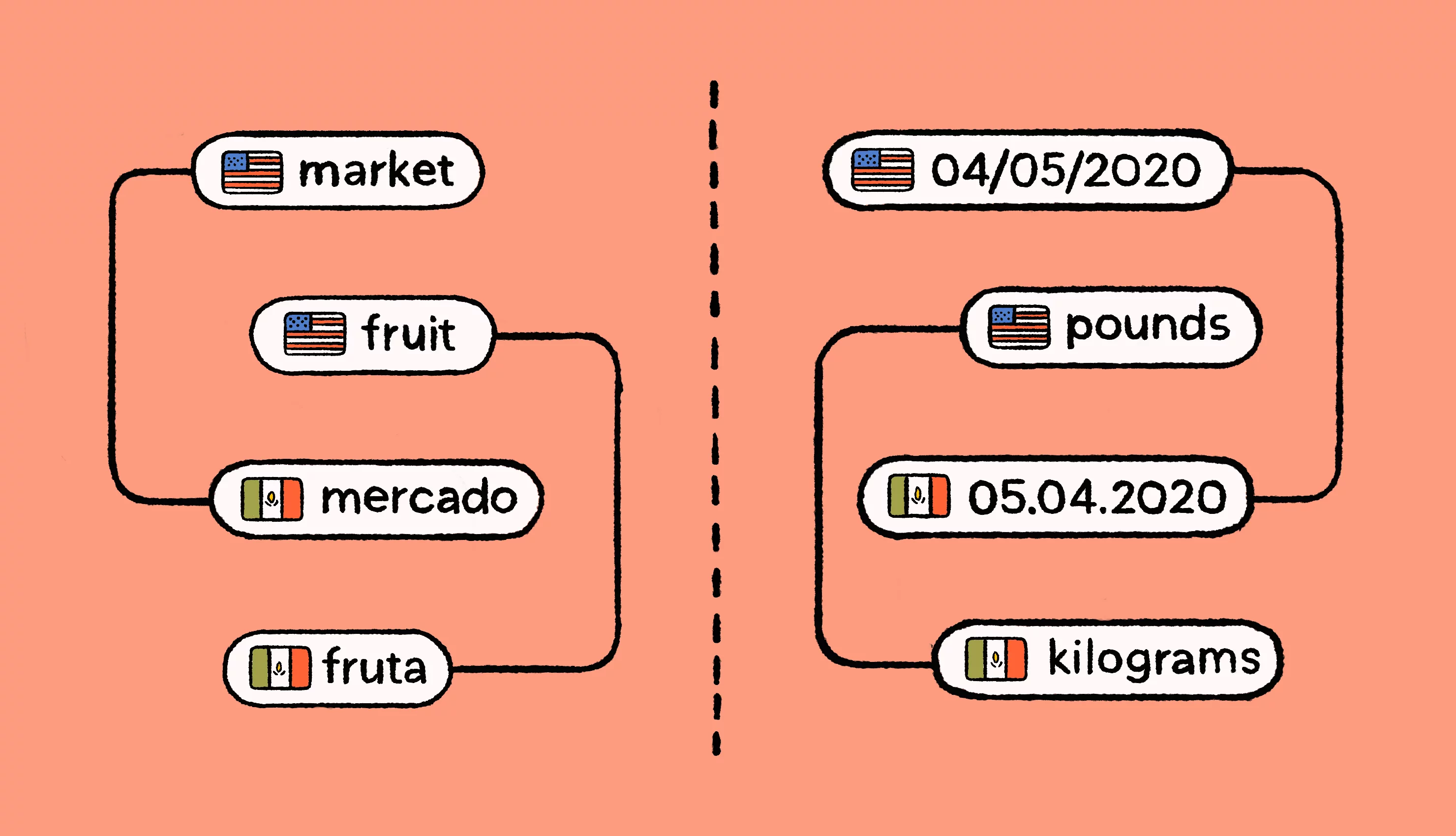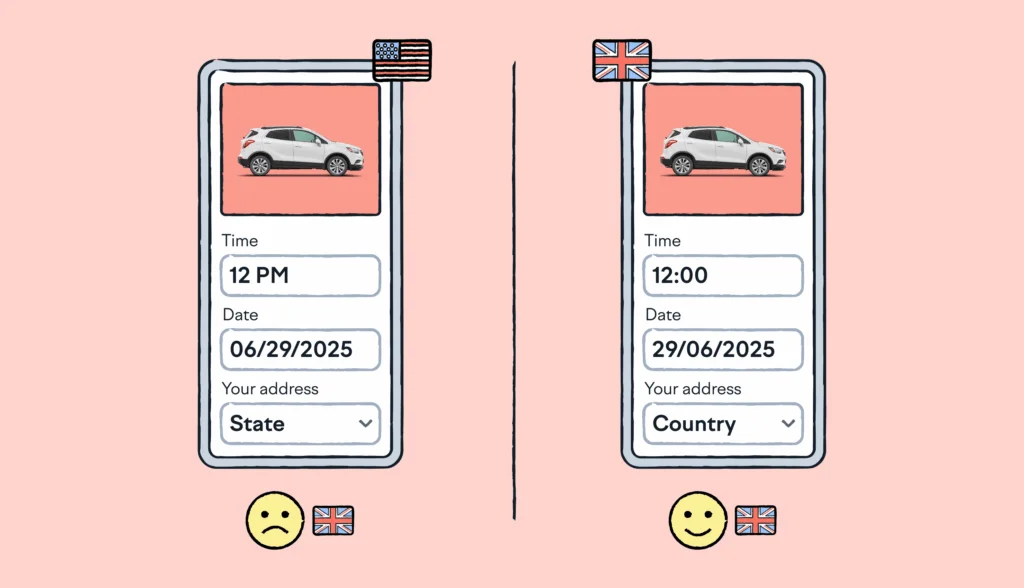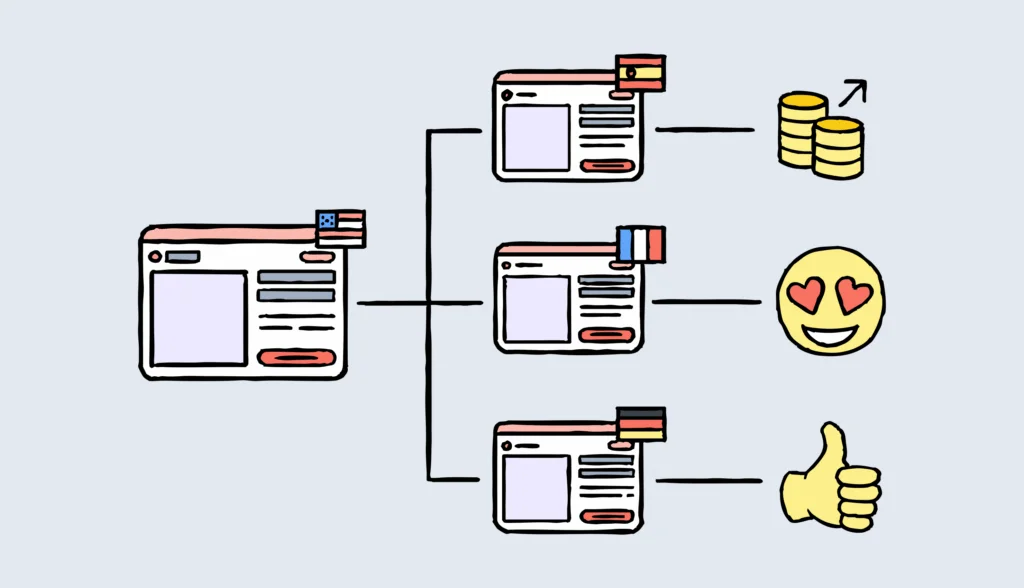People who work in the localization and translation industry use loads of jargon and abbreviations.
Things like: Localization = l10n
But spend some time talking to people from outside the localization industry, and you’ll often see localization being used interchangeably with translation. Those who are practitioners know that these two processes differ, and they know exactly how.
To show you the difference between translation and localization, we’ll share creative examples and use cases for various industries. We’ll also explain when it makes sense to localize vs. translate.
But first, let us get clarity on the fundamental differences of localization vs translation.
The difference between translation and localization
Translation is the process of converting text from one language to another. Localization goes beyond translation to ensure content is culturally appropriate and well-received in the target market.
Translation prioritizes language accuracy, while localization pays specific attention to cultural, social, and linguistic nuances.
To put it visually:
| Process | What gets adapted |
| Localization | Experience |
| Translation | Message |
With translation, you’re adapting a message. With localization, you’re adapting an experience.
While translation and localization are two different processes, adapting the message is usually a part of adapting the digital experience.
In other words, translation is an integral part of the localization process.
You can translate without localizing, but you can’t localize without translating.
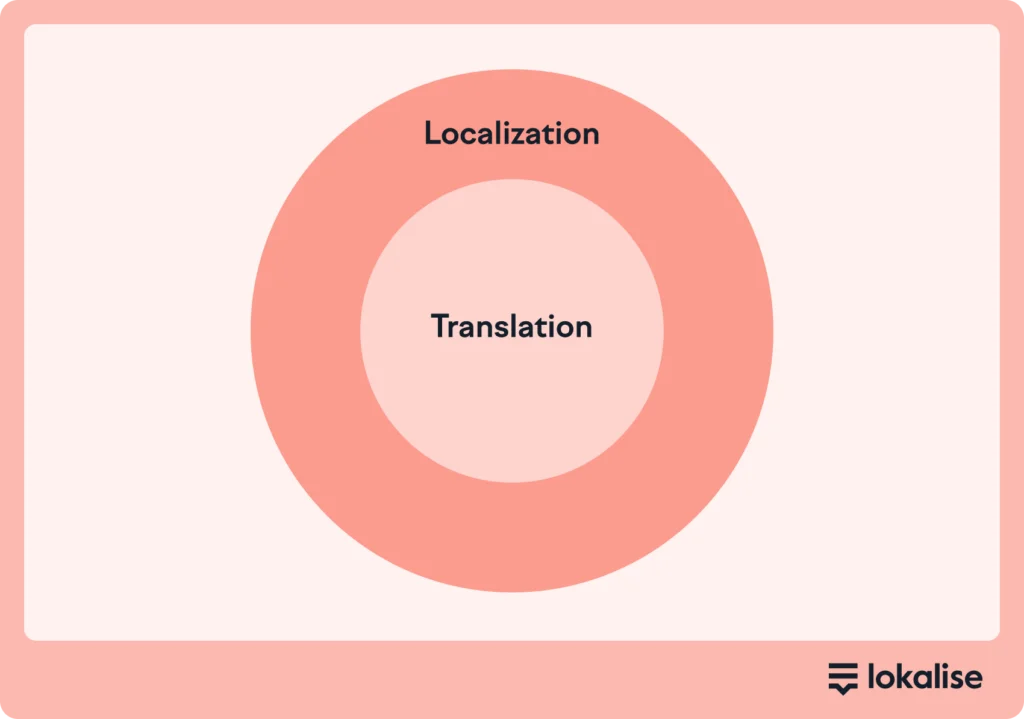
Translation vs. localization example
People might define localization examples as something that would have been traditionally called “adaptation” in the professional translation world.
Let’s use this sentence in American English as a simple example:
Two pounds of strawberries cost $10 and will be delivered to you on 04/05/2020.
Here’s the translation of this sentence in Spanish without any adaptation:
Dos libras de fresas cuestan $10 y se le entregarán el 04.05.2020.
But would this translation work for Spanish-speaking Mexico?
Localizing text for the target market
The above sentence has to be properly translated for Spanish-speaking Mexico, where:
- People use the metric system for weight, as opposed to the imperial system used in the USA
- The currency is the Mexican peso, not US dollars
- The date format used is day-month-year, not month-day-year as it is in the USA
When you take these differences into account, you can adapt the translation in a following way:
Un kilo de fresas cuestan 218 MXN y se le entregarán el 05.04.2020.
The above translation would only work for Mexico.
- For Spain, you’d convert the price into Euro
- For Argentina or Uruguay, you’d also change “fresa” to “frutilla” for the translation of “strawberry”
When looking at the media formats, translations primarily relate to text, while you can localize everything from text and visuals to entire experiences. In highly regulated industries, it’s common to use back translations for additional quality assurance.

📝Key takeaway
As you can see, the distinction between translation and localization is sometimes blurry.
Overall, if something relates to work on the text, it is still largely considered as translation.
If something relates to the context of the product as a whole, this is usually considered to be localization.
Keep on reading to better understand these nuances.
A closer look at localization and translation nuances
Translation is indeed part of localization, but so much more is required for content to become authentic and locally accepted. Check the infographic below to see what’s covered by localization and what applies to both translation and localization.
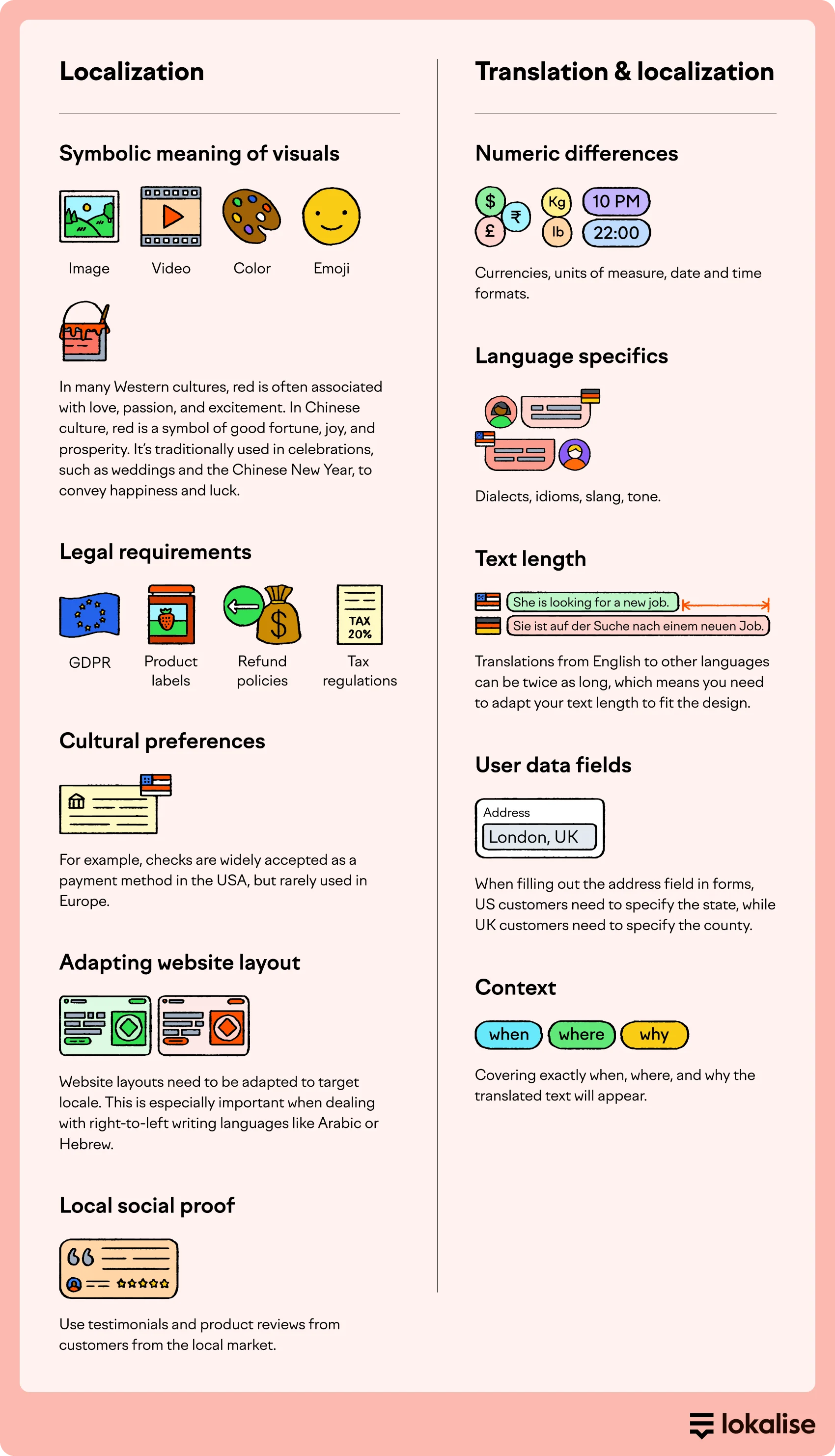
When is translation sufficient?
Do you necessarily have to localize your content? Let’s explore this shortly.
If your primary goal is to convert straightforward information (e.g., instruction manuals, technical product descriptions, standardized tests) from one language to another, you could get away with just translating content. However, internationalization plays a key role in preparing content for both translation and localization, ensuring the flexibility to adapt content for different markets when needed.
In this scenario, you’re dealing with standardized terminology and there’s minimal room for idioms and cultural misunderstandings. Your focus is on clarity and getting pragmatic information across, not culturally adapting content, so simply bridging the language gap should be enough.
The fascinating thing about localization is that when it’s done well, you don’t even notice it. Localization makes you feel like a program, website, or mobile application was designed just for you, not as a generic experience created as a one-size-fits-all.
When is localization critical?
When cultural relevance is at stake, and you want to get a positive emotional response from your target audience, localization becomes critical. It’s necessary when you’re adapting your brand’s voice and message to fit the local audience’s expectations. Here are a few examples:
- You have a digital product or service that is ready to become a truly global product.
- You operate in a highly regulated industry where using your product impacts real lives (e.g., medical software localization)
- You seek to provide an equitable digital experience to customers around the world.
- Your product has frequent updates that should reach your customers almost instantly.
- You waste hours of valuable engineering time on copy-pasting efforts or struggling with outdated technology.
- You are searching for a solution that will support linguistic diversity (e.g., supporting plurals, right-to-left languages, etc.).
- You want the freedom to choose a workflow and providers, and real-time access to your localization assets and in-progress projects.
📚Further read: Localization can make a huge impact on your business growth. See how Revolut doubled its customer base and saved 100+ by using Lokalise to automate their localization process.
[BONUS] Localization examples from Spotify and Notion
The fascinating thing about localization is that when it’s done well, you don’t even notice it. Localization makes you feel like a program, website, or mobile application was designed just for you, not as a generic experience created as a one-size-fits-all.
Spotify
Personalized content is at the heart of everything that Spotify offers. The company wants people to open Spotify and find something that fits them.
The first thing they do to make the experience more relevant to more people is to translate marketing content into the appropriate language. Take this example below, for a playlist called “Songs to Sing in the Shower.”

They think deeply about the cultural content they spotlight and highlight traditional Thai music in Thailand, recognize South Africa’s Freedom Day, and celebrate Diwali in India.

To create a fully immersive experience, Spotify also made changes to their recommendation engine to allow for localized music suggestions. Users could learn what was popular in certain cities or regions around the country.
However, Spotify doesn’t just rely on localized content inside their app. They also use hyper-localized marketing and advertising to reach potential users.
The ads speak to experiences unique to certain neighborhoods or cities. This catches the eye of potential Spotify customers, makes them feel recognized and understood, and promotes Spotify as an aid to help navigate these daily conundrums.

A hyper-localized ad from Spotify targeting specific demographics in India (Source)
Notion
Notion helps companies and individuals get organized and manage their teams with an all-in-one workspace.
From the very beginning, the company’s user base has been enormously international, with over 80% outside the U.S. across 28 countries. But their global experience wasn’t fostering the sense of home that aligns with Notion’s mission.
According to Katsukiyo Nishi, General Manager, Japan, at Notion:
“We want Notion to feel like it was built in every country where people use it.” As the team looked into building a global product, they picked South Korea as their first localized market due to the strong user base they had there.
Today, Notion’s products, resources, and guides are also available in Japanese.
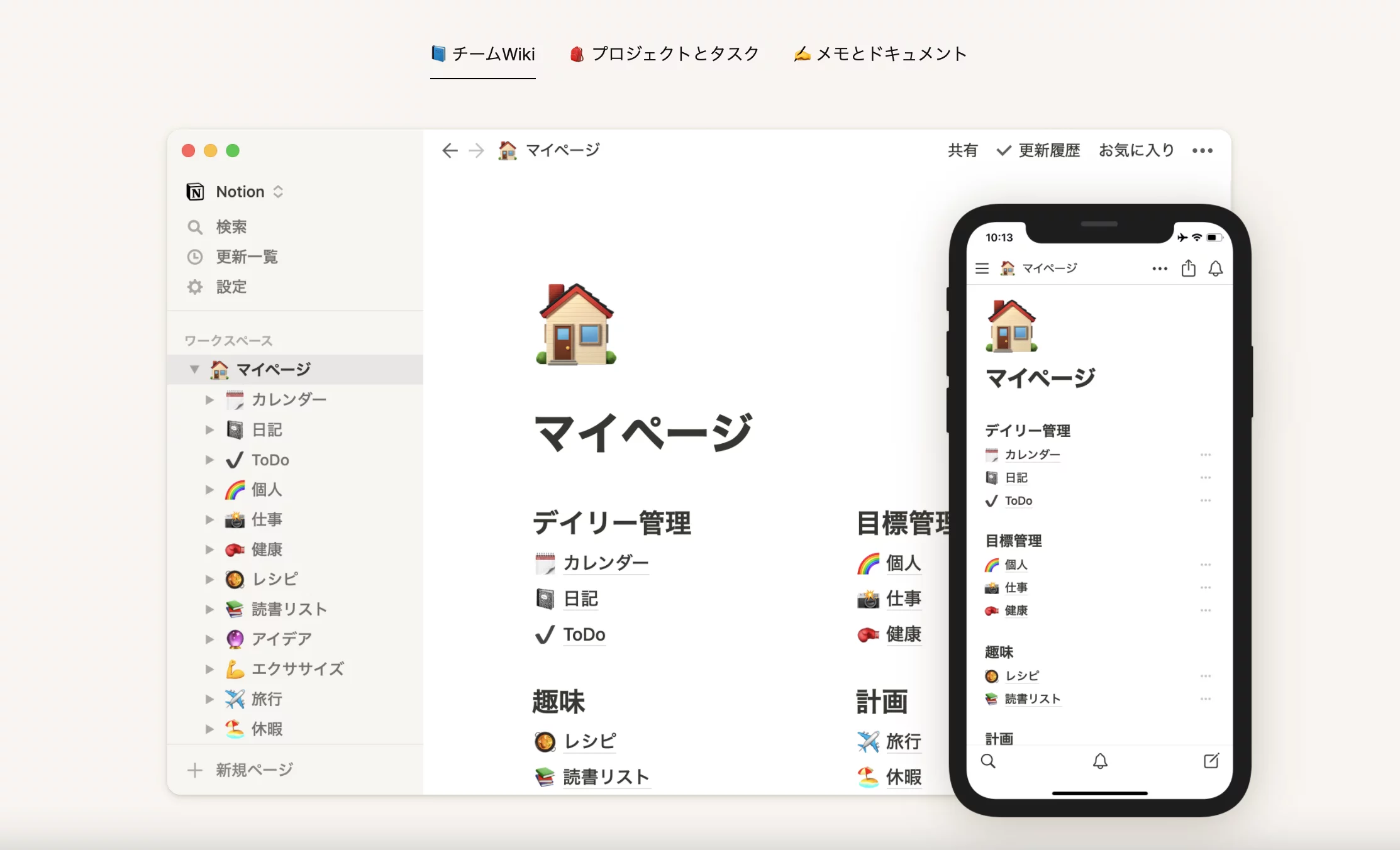
How did Notion do it? They started by creating a central hub for all the content assets that needed to be translated — over 251,000 words across their website, app, templates, help guides, and case studies.
To manage the process, Notion used Lokalise. The result was a database of content that could be optimized for use in any language.
📚Further read: Check out more localization examples from Netflix, Coca-Cola, IKEA, and more.
Useful resources on translation and localization
While this article covers the main differences between localization and translation, there’s a whole lot more to learn.
So, where to next?
We invite you to roam around the Lokalise resource library and explore useful resources on translation and localization.
If you’re getting ready to launch your translation or localization project, here are some useful resources on finding the right team to work with:


